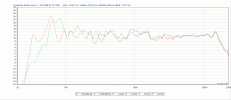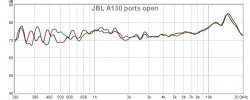MarkWinston
Addicted to Fun and Learning
- Joined
- Jul 13, 2021
- Messages
- 736
- Likes
- 578
Hey, no apology necessary Mark. Your earlier post made it sound like you thought measurements should be totally ignored. But without measurements we are stuck with subjective opinions only, and we know that our own opinions are always better than everyone elses. So in my opinion, measurements get us in the ballpark, but purchasing requires listening. It sounds like you agree with that?
Measurements first but definitely need to listen, even more so when the speaker is pricey. Lucky me, the A130 is cheap so I lost just a little when I sold it off but imagine losing 20 - 30 - 40% with a 5000 bucks speaker.


